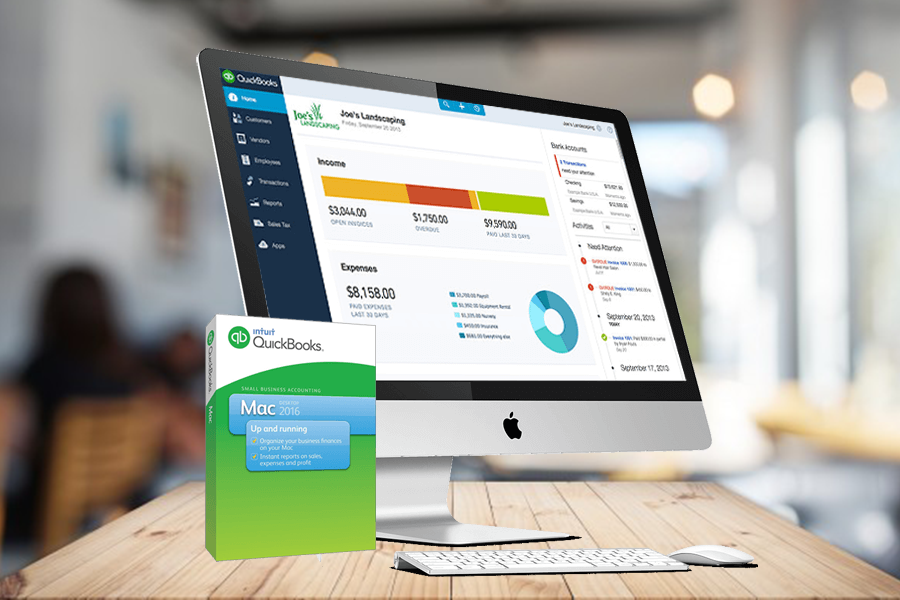
Not having a good bookkeeping system in place – that would provide warning signs that the business could run out of cash – is one of the main reasons businesses fail.
You can choose to set up a bookkeeping system manually (using accounting books), electronically (spreadsheets) or use accounting software. Unless you want to get familiar with bookkeeping practices, accounting software is the most efficient choice.
What to consider
May 20, 2020 Accounting software makes it easy for any small business to track income, outcome, and reduce costs in the long-term. Here we feature the best. Small business accounting software for Mac. With small business invoicing software for Mac, keeping on top of accounting tasks doesn’t have to be a headache. In this section, we will look at the best all-round accounting software, plus some excellent options for invoicing and bookkeeping. Best small business accounting software for Mac.
Every business will have different requirements from an accounting software. When choosing an accounting software consider the following questions:
- Does the system calculate all payroll requirements (PAYE, annual leave, long service leave etc.)?
- Does the system track stock, work in progress, orders, jobs and other task management requirements?
- Will the system be able to handle multiple bank accounts?
- Does the system need to handle foreign currency?
- Does the system track separate financial records for each business or department within the business?
- Does the system allow for interface with other computer systems such as online payments?
- Does the system keep detailed records on customers including what they buy, how often they buy and when they buy (often referred to as a Customer Relationship Manager system)?
Software options
There are many software packages on the market that allow business managers to successfully control records without an accounting degree. Some of them, such as Free Accounting Software, have no cost. Some commonly used accounting systems used by small businesses are:
Software to manage Single Touch Payroll requirements
From 1 July 2019, businesses with fewer than 19 employees are required to report tax and superannuation information directly to the ATO (larger employers with 20 or more employees began reporting requirements earlier). This is known as Single Touch Payroll (STP).
If you are already using accounting software, STP reporting should be built in. You can see a full list of STP solutions here.
If you are not already using accounting software, the ATO has compiled a list of low or no-cost STP solutions costing $10 or less per month.
Getting advice
If you're unsure which software to choose, talk to your accountant or business adviser. It's worth checking to make sure the package has Standard Business Reporting forms needed to report to the ATO such as BAS statements.
It's also a good idea to ask other business owners what they use. If you don't know any, the Business Victoria Facebook group is always happy to answer your questions.

Accounting Software With Payroll

Setting up a bookkeeping system
When you set up your financial records, you need to make sure they meet any compliance requirements such as GST or other tax compliance.
This is done through setting up classifications, also known as a chart of accounts. A chart of accounts is a listing of all the accounts needed to cover the financial transactions of the business. Classifications are used to separate profit and loss calculations to show where a business is making or losing money. It's also used to determine the overall financial position of a business in a balance sheet.
How to set up a chart of accounts
The chart of accounts is very important to the overall effectiveness and accuracy of your bookkeeping. If you don't feel you understand it enough, then you should discuss this in further detail with your bookkeeper or accountant before setting up your bookkeeping records.
When setting up a chart of accounts, you'll need to:
Best Accounting Software For Small Business
- Define the various accounts to be used in the business, such as different classes of assets, liabilities, expenses and sales revenue.
- Make a list of these accounts under the financial classifications as noted above – each different type of account for assets, liabilities, sales revenue and expenses.
- Allocate a numbering system for each account within the chart of accounts, such as all asset accounts will have been classified under the 1000 number, and all liability accounts will be classified under the 2000 number.
- Allocate various sub-accounts under these main accounts.
- Determine if each sub-account needs sub-accounts – this will depend on the level of information you need.
Best Small Business Payroll Software
Accounting packages have predefined chart of accounts which you can allocate to your own financial transactions.
Small Business Accounting Software For Mac With Payroll Services
Use our example chart of accounts below as a reference, and if you're not feeling confident, your bookkeeper or accountant can help set up a meaningful chart of accounts for you.